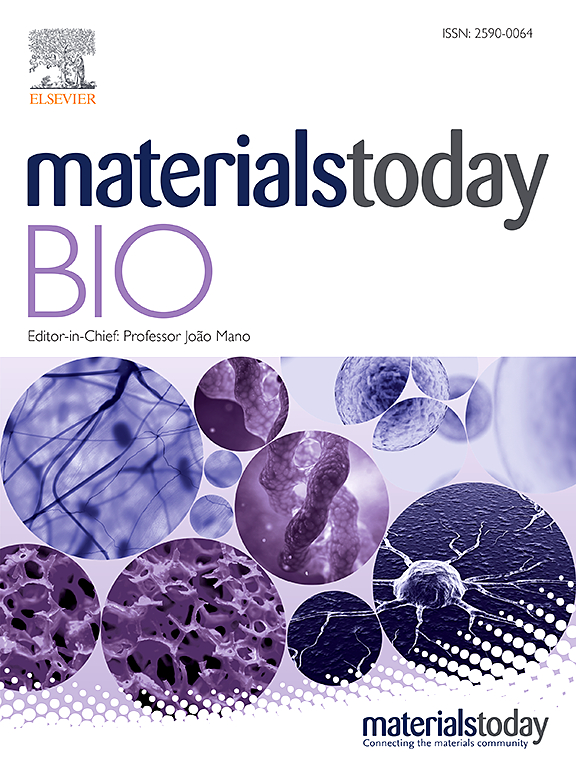Hyaluronic acid-based hydrogel microspheres with multi-responsive properties for antibacterial therapy and bone regeneration in Staphylococcus aureus-infected skull defects
IF 8.7
1区 医学
Q1 ENGINEERING, BIOMEDICAL
引用次数: 0
Abstract
This study introduces hyaluronic acid-based (HA) hydrogel microspheres loaded with zinc oxide nanoparticles (ZnO-NPs) for the treatment of infectious bone defects. The microspheres were fabricated using a 3D-printing process, with a formulation consisting of 6 wt% HAD (methacrylated HA), 3 wt% AOHA (AMP-conjugated oxidized HA), 1 % BOHA (phenylboric acid-conjugated HA), 0.5 % photoinitiator, and 0.05 % ZnO-NPs. In vitro, the hydrogel microspheres demonstrated significant antibacterial activity against Staphylococcus aureus, with colony counts and biofilm inhibition assays showing a marked reduction in bacterial growth after 12 and 24 h. The release of antimicrobial peptides (AMPs) was enhanced in acidic conditions and in the presence of hyaluronidase. The microspheres also promoted osteogenic differentiation of bone marrow stromal cells (BMSCs), as evidenced by increased expression of osteogenic markers (ALP, OCN, OPN, and COL-1). In vivo, the hydrogel microspheres were tested in a rat skull defect model, showing significant bone regeneration, improved angiogenesis, and an anti-inflammatory response. These results indicate that ABOHA@ZnO hydrogel microspheres provide a promising strategy for treating infectious bone defects by combining antimicrobial, osteogenic.
具有多重响应特性的透明质酸基水凝胶微球用于金黄色葡萄球菌感染的颅骨缺损的抗菌治疗和骨再生
本文章由计算机程序翻译,如有差异,请以英文原文为准。
求助全文
约1分钟内获得全文
求助全文
来源期刊

Materials Today Bio
Multiple-
CiteScore
8.30
自引率
4.90%
发文量
303
审稿时长
30 days
期刊介绍:
Materials Today Bio is a multidisciplinary journal that specializes in the intersection between biology and materials science, chemistry, physics, engineering, and medicine. It covers various aspects such as the design and assembly of new structures, their interaction with biological systems, functionalization, bioimaging, therapies, and diagnostics in healthcare. The journal aims to showcase the most significant advancements and discoveries in this field. As part of the Materials Today family, Materials Today Bio provides rigorous peer review, quick decision-making, and high visibility for authors. It is indexed in Scopus, PubMed Central, Emerging Sources, Citation Index (ESCI), and Directory of Open Access Journals (DOAJ).
 求助内容:
求助内容: 应助结果提醒方式:
应助结果提醒方式:


